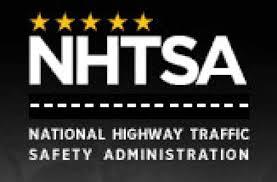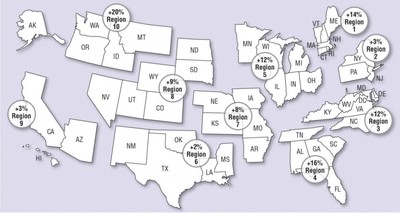2016 USA Traffic Deaths Up 7.7% Says NHTSA
 |
SEE ALSO: NHTSA TRAFFIC DEATH REPORT
WASHINGTON July 1, 2016; Preliminary data released today by the U.S. Department of Transportation’s National Highway Traffic Safety Administration show a 7.7 percent increase in motor vehicle traffic deaths in 2015. An estimated 35,200 people died in 2015, up from the 32,675 reported fatalities in 2014.
“Every American should be able to drive, ride or walk to their destination safely, every time,” said U.S. Transportation Secretary Anthony Foxx. “We are analyzing the data to determine what factors contributed to the increase in fatalities and at the same time, we are aggressively testing new safety technologies, new ways to improve driver behavior, and new ways to analyze the data we have, as we work with the entire road safety community to take this challenge head-on.”
Although the data are preliminary and requires additional analysis, the early NHTSA estimate shows 9 out of 10 regions within the United States had increased traffic deaths in 2015. The most significant increases came for pedestrians and bicyclists.
“As the economy has improved and gas prices have fallen, more Americans are driving more miles,” said NHTSA Administrator Dr. Mark Rosekind. “But that only explains part of the increase. Ninety-four percent of crashes can be tied back to a human choice or error, so we know we need to focus our efforts on improving human behavior while promoting vehicle technology that not only protects people in crashes, but helps prevent crashes in the first place.”
In response to early estimates showing fatality increases,the agency convened a series of six regional safety summits with key stakeholders throughout February and March. As a result of those summits, the agency is working to develop new tools that could improve behavioral challenges including drunk, drugged, distracted and drowsy driving; speeding; failure to use safety features such as seat belts and child seats; and new initiatives to protect vulnerable road users such as pedestrians and cyclists.
In addition, when the final dataset is released later this summer, DOT and NHTSA will issue a call to action to safety partners, state and local elected officials, technologists, data scientists and policy experts to join the Department in searching for more definitive answers and developing creative, open data-driven solutions to improve safety and reduce deaths caused by motor vehicles.
The U.S. Department of Transportation is also pressing forward with new guidance to promote the development of automated safety technologies which could greatly decrease the number of crashes. NHTSA hosted two public meetings on automated safety technologies, in advance of guidance that will be issued later this summer. NHTSA and FHWA are also working closely on the implementation of the new safety performance measures, which require States and metropolitan areas to set targets for reducing deaths among motorized and non-motorized road users.
“The July 4 holiday is historically one of the deadliest days on U.S. roadways, so this weekend Americans should take extra care to ensure they get to their destinations safely,” Foxx added. “Every driver should make sure all of their passengers are buckled up every time, and no driver should get behind the wheel when they’ve been drinking.”
In March, the Department of Transportation announced a key safety agreement with automakers requiring more than 99 percent of new vehicles to have automatic emergency braking standard by 2022. This safety technology could prevent thousands of crashes every year. The Department is working to require vehicle-to-vehicle communications systems on new vehicles, a technology which could help drivers avoid or mitigate 70 to 80 percent of vehicle crashes involving unimpaired drivers. DOT is also working with researchers on technologies that could prevent drunk driving, which is responsible for close to one-third of highway deaths.
Stay connected with NHTSA: Search for open recalls with VIN look up | Download the Safercar Mobile App for Apple or Android devices | Receive recall alerts by email | Visit us on Facebook.com/NHTSA | Follow us on Twitter.com/NHTSAgov | Watch 5-Star Safety Ratings crash tests on YouTube.com/USDOTNHTSA | SaferCar.gov



